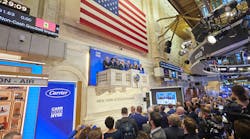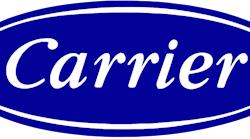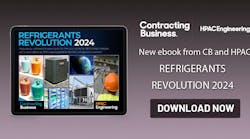In December 2009, New York City Mayor Michael R. Bloomberg signed the four legislative components of the Greener, Greater Buildings Plan (GGBP):
- Local Law 84 (http://on.nyc.gov/GGBP_LL84), which requires benchmarking and public disclosure of building energy and water consumption.
- Local Law 85 (http://on.nyc.gov/GGBP_LL85), which requires all new work in existing buildings to comply with the Energy Conservation Construction Code of New York State.
- Local Law 87 (http://on.nyc.gov/GGBP_LL87), which requires every building over 50,000 sq ft to undergo an American Society of Heating, Refrigerating and Air-Conditioning Engineers (ASHRAE) Level 2 energy audit and have its systems retuned every 10 years through the existing-building-commissioning (EBCx), or retrocommissioning, process.
- Local Law 88 (http://on.nyc.gov/GGBP_LL88), which requires the upgrading of building lighting to current energy-efficiency standards, the installation of electrical submeters, and the submittal of monthly electrical statements to metered tenants.
These laws are setting the pace for commissioning in the heavily inertial world of American building design and construction. This article will review the impact these laws have had on the commissioning community in New York City and beyond.
Background
The GGBP is part of PlaNYC, an effort undertaken by New York City’s Office of Long-Term Planning and Sustainability to prepare the city for 1 million more residents, strengthen the local economy, combat climate change, and enhance quality of life. So far, PlaNYC has built and preserved parks and housing, enhanced mass transit, and made existing buildings more energy-efficient.
Why Now?
In the United States, deferred maintenance has become an industry standard. As operations-and-maintenance (O&M) staffs shrink, equipment is left to limp along, providing marginal comfort, sometimes at outrageously low levels of efficiency. The city sought to stem the bleeding with the passage of the first four laws of the GGBP—specifically, Local Law 87. Other states and cities have instituted variants of this, but New York requires both audits and EBCx for both publicly and privately owned buildings. Through identification of energy-saving opportunities and low/no-cost O&M fixes, even very old buildings can be given a new lease on life. More importantly, the city can get a reprieve from having to shoehorn new utilities into the maze of pipes, tunnels, and cables beneath its streets, and the region can forestall the construction of new power plants.
The Local Laws
Under Local Law 84, water consumption is reported by the city water department. Energy bills are collected and tallied, although local utilities cooperate in providing information on a meter-by-meter basis. Benchmarking is performed using the U.S. Environmental Protection Agency’s Portfolio Manager energy-management tool. Owners provide basic information (square footage, hours of operation, etc.) and all monthly energy data (electricity, oil, gas, etc.), and a score that ranks the building against similar buildings nationwide is returned. The city finance department posts the results for city buildings; beginning in September 2012 and September 2013, it will post the results for nonresidential buildings and residential buildings, respectively.
Until Local Law 85 went into effect, compliance with the Energy Conservation Construction Code of New York State was not required unless 50 percent or more of a building was altered. Now, all new work in an existing building must comply with the code, no matter how small the scope.
With regard to lighting, Local Law 88 excludes residential-tenant living units. Electrical submeters, meanwhile, must be installed for all spaces over 10,000 sq ft.
Local Law 87 is the most interesting and far-reaching of the laws. Both an audit and EBCx must be performed by energy professionals outside of a building’s O&M staff. The deadline for compliance is based on a building’s tax-block number. For example, a building with a tax-block number ending with “6” needs to file in 2016. Early compliance is allowed. If an audit and EBCx are completed prior to 2013 and submitted in 2013, the process will not have to be repeated until 10 years after the date determined by the building’s tax-block number.
Local Law 87 allows EBCx and audits to be performed separately or together. Guidelines published by the Building Commissioning Association (http://bit.ly/BCA_home), the U.S. Green Building Council (USGBC) (http://www.usgbc.org/www.usgbc.org/), and the State of California (as well as ASHRAE in Guideline 0.2, The Commissioning Process for Existing Systems and Assemblies, currently in process) include the tasks of an energy audit within the overall EBCx process. The audit portion of Local Law 87 includes a breakdown and narrative of a building’s energy consumption and a description of all reasonable energy-conserving fixes, along with estimated implementation costs, savings, and simple payback period.
Details of EBCx
Local Law 87 was developed by commissioning experts in New York and from around the country. Moreover, it has been vetted by what may be the toughest building owners and developers in America and gone through the rigorous New York City rule-making process.
EBCx includes verification of:
- HVAC temperature and humidity set points and setbacks.
- Operating schedules.
- HVAC sensors, controls, and sequences.
- Load distribution and ventilation rate.
- Equipment sizing and optimization.
- Simultaneous heating and cooling.
- Economizer controls.
- Air and water balance.
- Light levels and sensors.
- Domestic-hot-water temperature and circulation.
- Air and water leaks.
- Cleanliness of light fixtures, equipment, motors, and ducts.
- Steam traps.
- Boiler tuning.
- Pipe and duct insulation.
- Maintenance accessibility.
- Training, O&M documentation, and permits.
Local Law 87 is explicit and, thus, user-friendly for O&M staffs with a variety of educational backgrounds.
An EBCx report must include:
- The names of the members of the EBCx team, the owner of the building, and the manager of the building.
- A summary of the experience and qualifications of the EBCx provider(s).
- A list of the equipment tested and sample rates.
- The types of testing performed.
- Benefits, estimated savings and costs, and simple payback period.
- Completed repairs.
- The latest equipment manuals.
Local Law 87 mandates that an audit team include one of the following:
- A New York State Energy Research & Development Authority-approved FlexTech contractor.
- An Association of Energy Engineers certified energy manager or certified energy auditor.
- An ASHRAE high-performance-building design professional.
For audits of multifamily residential buildings, a Building Performance Institute Multi Family Building Analyst Professional certification may be substituted for the above qualifications. The team must include an individual with at least three years of professional experience auditing the energy use of buildings larger than 50,000 sq ft.
Building the Labor Force
Anticipating the need for more building-performance professionals, the Urban Green Council, the New York chapter of the USGBC, created GPRO (http://gpro.org/), a comprehensive national training and certificate program. The GPRO curriculum provides focused information on mechanical, electrical, plumbing, and general green practices for new and existing buildings, packed into easy-to-understand 4- to 12-hr courses.
No area of sustainable design and operation needs this training more than commissioning. Twenty-two years after publication of the original ASHRAE commissioning guideline, many buildings professionals do not know what commissioning is or how it fits into the conventional design/bid/build process. GPRO is an example of basic instruction that paves the way for the successful inclusion of commissioning in new- and existing-building projects. GPRO is available in New York, Texas, Colorado, and Illinois and spreading.
Conclusion
Through intense collaborative development and vetting, New York’s Greener, Greater Buildings Plan—Local Law 87 in particular—is leading the way to persistence in building excellence.
Bibliography
BCA. (2008). Best practices in commissioning existing buildings. Portland, OR: Building Commissioning Association. Available at http://bit.ly/BCA_EBCx
CCC. (2006). California commissioning guide: Existing buildings. California Commissioning Collaborative. Available at http://bit.ly/CACxGuide
PECI & ORNL. (1999). A practical guide for commissioning existing buildings. Oak Ridge, TN: Oak Ridge National Laboratory. Available at http://bit.ly/ORNL_guide
USGBC. (2009). LEED reference guide for green building operations and maintenance. Washington, DC: U.S. Green Building Council.
A commissioning project manager for AKF Group LLC and a longtime member of HPAC Engineering’s Editorial Advisory Board, Ron Wilkinson, PE, LEED AP, is the author of the first commissioning training program for the Leadership in Energy and Environmental Design for New Construction and Major Renovations Green Building Rating System, the chair of the commissioning advisory committee of The American Institute of Architects (AIA) Committee on the Environment, and the recording secretary for American Society of Heating, Refrigerating and Air-Conditioning Engineers (ASHRAE) Guideline Project Committee 0.2/1.2, The Commissioning Process for Existing Building Systems and Assemblies/The Commissioning Process for Existing HVAC&R Systems. An ASHRAE Distinguished Lecturer and an AIA Continuing Education Lecturer, he has spoken on commissioning practices internationally.
Did you find this article useful? Send comments and suggestions to Executive Editor Scott Arnold at [email protected].









